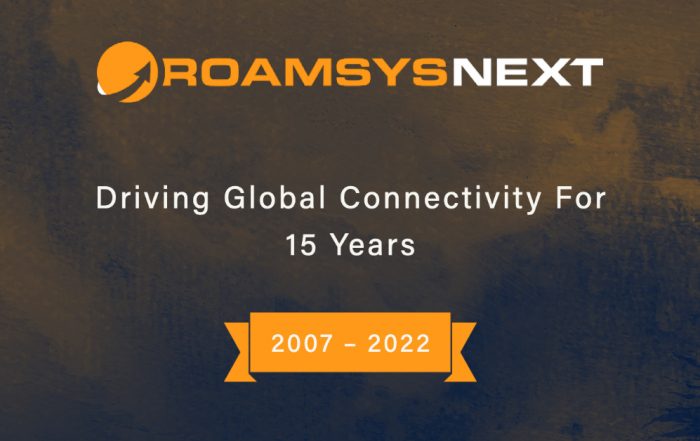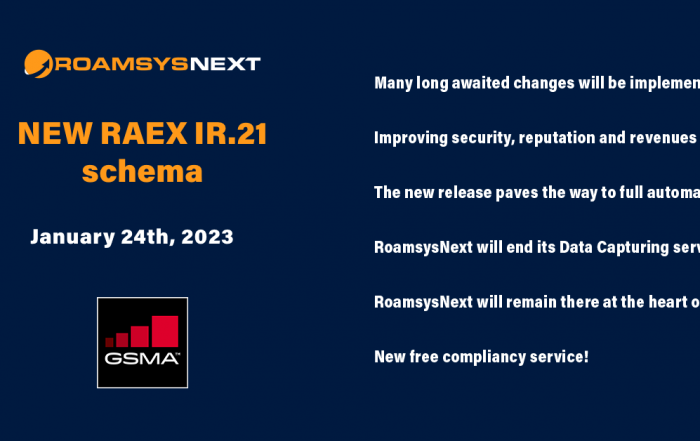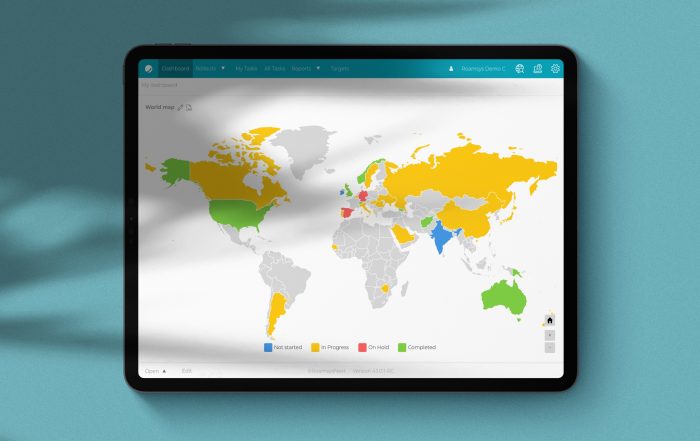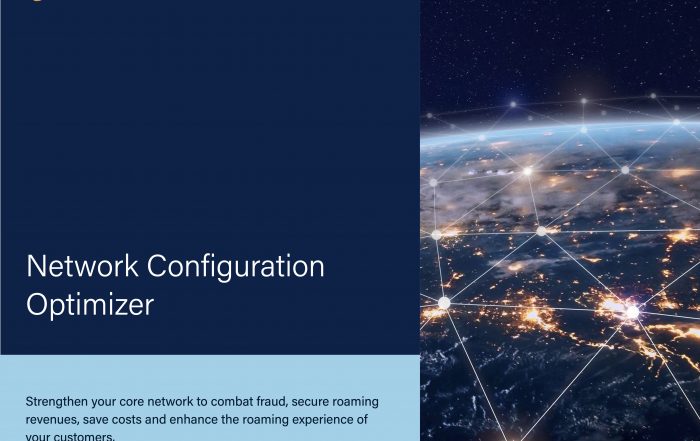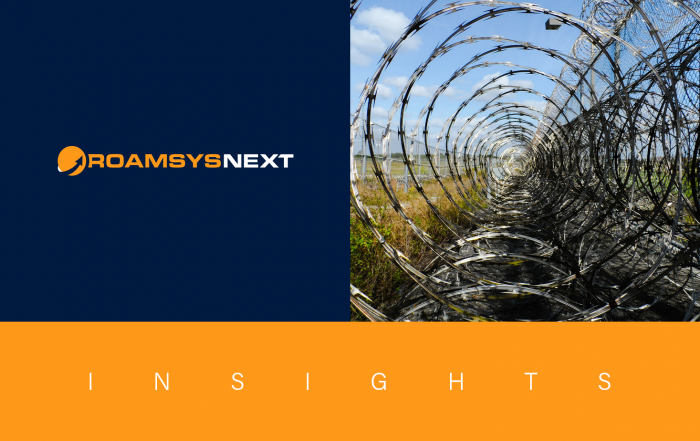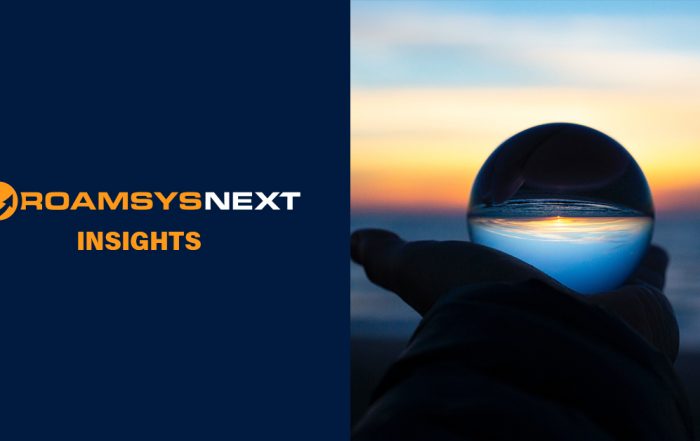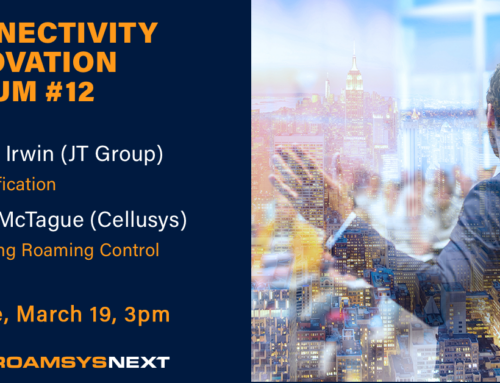
Gabriele Lieser
CUSTOMER SUCCESS MANAGER
Summary
Malicious actors are getting better organized, more sophisticated, and eventually more brazen. As a result, MNOs have difficulties in dealing with cyberthreats because previously powerful defense methods and tools are becoming less effective. But here is a thought: rather than each company upgrading defenses and accumulating costs, wouldn’t it be a good idea to allocate some of it and share threat intelligence? This comes in handy when fraudsters pass on successful attacks to similar organizations. Sharing fraud intelligence among trusted partners and trusted groups prevents fraud incidents from repeating, it speeds up reaction times and saves resources. Furthermore, it shortens the lifespan of attacks and places a big burden on attackers to stay in business. In recent years, there has been a noteworthy evolution of platforms and standards that help organisations collect, organise, share and identify sources of threat data. The Malware Information Sharing and Threat Intelligence Sharing Platform (MISP) is one such platform.
The MISP was conceived in 2011 as a remedy to inefficient manual sharing of intelligence by email or PDF documents. The early versions of the MISP improved information sharing via practical open-source tools, open formats and practices. These days, there are a variety of MISPs available specializing in terms of users; banks, for instance, have different threats to deal with than mobile operators.
Luckily, there is a dedicated GSMA MISP specially geared towards the mobile industry. It was jointly implemented by the GSMA and the prestigious Luxembourgish CIRCL (Computer Incident Response Center Luxembourg, circl.lu). CIRCL leads the development of the open-source MISP, which is used by military or intelligence communities, private companies, the financial sector, national CERTs (Computer Emergency Response Teams), and LEAs (Law Enforcement Agencies) worldwide. More than 6000 organisations are using it. CIRCL operates several large MISP communities that actively share threat intelligence on a daily basis.

In RoamsysNext Insights our experts share their views on extensive industry topics and possible solutions we can offer.
After decades of bad actors focusing on the financial services industry, its defenses have become strong. Fraudsters are looking for new targets, they go where victims are easy to find and where there is value. Just recently, intrusion attempts to steal data on COVID-19 vaccines have been in the news. National and civil structures such as power grids, water supplies, and hospitals are increasingly being attacked. When ransomware cripples a hospital, cybercrime does not only cost money; it literally costs lives.
So, the benefits of a malware information and threat intelligence sharing platform seem obvious. The many different user groups find indicators in the MISP to detect whether they have infected systems in their infrastructure or in the systems they operate. Others use the attributes to block, sinkhole or divert traffic. Indicator sharing is also used for intelligence, to gather information about campaigns and attacks to answer questions like: are certain campaigns and attacks related? Who is targeting me? Who are the perpetrators?
What are the Benefits of MISP?
Many different types of users take advantage of an information sharing platform like MISP to manage their daily work. These include malware reversers who want to share analysis indicators with their respective colleagues. Security analysts who actively seek out indicators, validate them and use them in operational security. Intelligence analysts who need information about specific adversary groups. Law enforcement agencies that rely on indicators to drive their DFIR cases (Digital Forensics and Incident Response). Risk analysis teams that want to know about new threats, probabilities and incidents. And also fraud analysts who are willing to share financial indicators to detect financial frauds.

Difficulties with Sharing Information?
Many useful community projects struggle with the problem of engagement. Take Wikipedia, highly regarded and widely used by everyone, and yet they suffer from funding problems. Something similar is true for MISP: difficulties in sharing are rarely caused by technical problems, but rather by the issue of trust. Legal and practical constraints are then often listed as problems. MNOs who could contribute state that their legal framework does not allow them to share information. Or that the risk of information leakage is considered too high, and therefore too risky for their organization or partners.
On the practical side, it is often cited that they do not have relevant information that could be shared, or that there are neither time nor resources to process or contribute indicators. Sometimes they will also use different models of classification or different tools to share information that are tied to a specific format. Some of these topics are covered in the ISO/IEC 27000 series of standard, it provides best practice recommendations for information security management.
Contributing is Easy!
The core functionality of MISP is sharing. Everyone can be a consumer and/or a contributor/producer. Users get quick results without the obligation to contribute. The access to the tool is designed to be low threshold so that people can quickly become familiar with the system. MISP has a variety of features to help users create, collaborate, and share threat information – such as flexible sharing groups, automatic correlation, free-text import help, event distribution, and proposals. Many export formats are provided, and a rich set of MISP modules to add extension, import and export functionalities is also available.
The correlation functions, for instance, are a brilliant tool for analysts. They are needed to confirm a finding (e.g. is it the same campaign?), to support an analysis (e.g. do other analysts have the same hypothesis?), to confirm a particular aspect (e.g. are sinkhole IP addresses used for one campaign?), or simply to find out if this threat is new or known in the community. Contributors can use the UI, API, or freetext import to add events and attributes. Contributions can be made directly by creating an event, and colleagues can also suggest attribute updates to the event owner. MISP includes a flexible tagging scheme where users can choose from more than 42 existing taxonomies or they can create their own.

One’s Detection is Another’s Prevention
MISP is just a tool. A tool which is as transparent as possible to build and maintain trust and support contributors. What counts are the contributions of everyone during the sharing process. The MISP project combines open-source software, open standards, best practices and communities to make information sharing a reality. We can only encourage every mobile network operator to actively use the GSMA MISP: it is a service provided free to the GSMA membership!
We stand behind the motto: One organization’s detection is another’s prevention. The fraud landscape and the pressure on individual MNOs is growing, especially due to the technology shift to 5G. Even if a different impression might have been created in the media: 5G networks are not secure by default. Like all complex networks, they require good security design and constant vigilance. In order to meet three challenges at once: complying with national and international regulations, avoiding data and revenue loss, and protecting the brand image, it is imperative for MNOs to ensure the reliability and security of their mobile services.
An Ounce of Prevention is Better than a Pound of Cure
With the help of the latest technologies and together with the GSMA, we are working on more efficient solutions. Consequently, we are keeping an eye on upgrading security aspects. The good news is, in the near future there will be an easy-to-use platform to tell in a very automated and a very curated way the details of high-risk numbers, suspicious number ranges, MCC/MNC codes and operator IP-ranges. Stay tuned for new developments from the house of RoamsysNext.
Since 2009 RoamsysNext has been specializing in the software development and project management as the GSMA’s exclusive provider of RAEX solutions providing superior service and competitive pricing. With our Wholesale Roaming Manager, we help MNOs converge roaming partner information and relationships in a precise and secure way with an all-in-one solution from test SIM cards, over tariff, document and contact management. Additionally, we help to strengthen the core network by spotting missing and incorrect configurations and vulnerabilities with the Network Configuration Optimizer. Further audits are essential to make sure that the correct configurations are implemented in every network node.
Already more than 700 MNOs across the globe trust in our tools and services. If you are interested in our products just reach out at info@roamsys.com. We are always happy to help, and we will always find great solutions to your requests.
Gabriele Lieser joined RoamsysNext in 2020 as Customer Success Manager to strengthen the bonds with our increasing number of customers and to support the marketing team. Gabriele has a strong background in corporate sales. She studied at the universities of Trier (Germany) and Manitoba (Canada) and is incorporated in the RoamsysNext Client Service team.
“The team is a crucial asset”
It has been an exciting year for RoamsysNext. And as 2023 is coming to an end, we took the opportunity to talk with CEO Michael Grasmück about the past year, the growing team that becomes more and more international, and the comeback of an industry institution.
15 years of RoamsysNext – Driving Global Connectivity
RoamsysNext turns 15, so we talked with CEO Michael Grasmück about the anniversary, the early years, the move to Luxembourg and the future within the fast-developing roaming industry.
The new age of the IR.21 – Be ready for the full automation!
The new RAEX IR.21 schema will be released early 2023 with great changes coming that allow us to revolutionize the way we work with the IR.21 data.
Reporting at a glance: The RoamsysNext Dashboards
The RoamsysNext tools offer many reporting functionalities of which the dasboards play an important role. Learn more about using them in practice to identify bottlenecks, visualize your team's performance and bring a smile to your management's faces.
End-2-End-Automation with Network Configuration Optimizer
The RoamsysNext Network Configuration Optimizer is the perfect solution to make the shift from manual processing to more and more automated processing, with the option to move to full automation. Let's see how it works.
From Roamsys to RoamsysNext
Sixteen months ago, Roamsys relaunched and became RoamsysNext. Time to look back to a year we never expected to happen.
How to Stay Secure
What can MNOs do to stand up to the ever-growing tide of telecom fraud and protect their assets? Stay alert, use great tools, collaborate with other market players, and take the fight to the fraudsters.
Telecom Fraud Hurts
Telecom fraud is a rapidly growing area that has serious effects on national critical infrastructure (civil, healthcare, energy, agriculture...) and wider industrial processes.
The GSMA MISP – How Does it Help?
Malware information sharing and threat intelligence sharing has unbeatable benefits that make any caveats and challenges look small in comparison.
The Experts behind RoamsysNext Insights
RoamsysNext Insights has a growing fan base due to its substantial reports. With a wide variety of great information and exciting insights, they inspire beginners as well as professionals.
How to Treat 2G and 3G Closures without Becoming an Archivist?
As we are entering the era of 5G, legacy networks are in a state of flux and lose significance. This blog is about how the sunsetting of 2G and 3G networks will impact mobile communication.
How to Choose a Signaling Firewall Wisely
In times of global turbulences and increasing fraud attacks the decision for a sophisticated signaling firewall becomes more and more a priority. Some general considerations help to narrow down the choice.
Identity Fraud in Telecom
Identity fraud robs people of their virtual existence; it costs time, money and nerves. But there are countermeasures that help.
How to Tackle the Challenges in Combating Telecom Fraud
Telecom fraud can have dire effects on critical infrastructure and always causes painful loss of revenue. See how the industry's joint efforts tackle the challenges in combating telecom fraud.
Face the Breach: Rehearse an Emergency Before it Happens
In case of a breach, most companies are poorly prepared to take quick action. Have a look at some ideas on how to make the best of a difficult situation and save valuable time.
Working from Home during a Global Pandemic
Due to the broad introduction of remote working, businesses need to rethink their current cyber security measures and consider how they need to be adapted or further developed.
The Future of Roaming Trainings – An interview with Milja Hofman, CEO Roamingwise
Roamingwise is a well-known provider of roaming trainings, seminars and consultancy in a variety of international roaming topics. In our interview, CEO Milja Hofman reveals how she prepares professionals to drive the roaming world.
Historical Fraud Incidents and Lessons to be learned
In the course of history, no era is free from the practice of deception for personal benefit. Let’s have a look at what we can learn from historic fraud cases from ancient Greece to modern times.
Two-Factor Authentication rules!
For some time now, we have introduced 2FA and have contributed our share to provide more secure access to our tools. Norbert Becker, Head of Software Development, picks up the thread and provides engaging insights into his area of responsibility.
Introducing: The RoamsysNext Network Configuration Optimizer
Learn how the RoamsysNext Network Configuration Optimizer enables MNOs to switch safely to full automation and growing roaming revenues by providing effective and secure data management of all roaming related business information.
Introducing: The RoamsysNext Wholesale Roaming Manager
The RoamsysNext Wholesale Roaming Manager provides powerful collaboration and reporting tools for all roaming partner relationships by converging everything from service openings to the user’s roaming footprint, test SIM cards and tariffs, document and contact management.
Don’t fear the breach – three more ways to avoid configuration errors
Three ways to bliss: take bold measures to automate processes as much as you can, check your firewall’s security logs regularly and enforce centralized authentication mechanisms.
We’re in this together
In the second part of our interview with Alexandre De Oliveira, POST Luxembourg Cyberforce, he highlights major pain points in fraud detection and stresses the importance of global information sharing via the GSMA T-ISAC initiative.
Mastering today’s Fraud Landscape
Learn how Alexandre De Oliveira’s team at POST Luxembourg Cyberforce is mastering today’s fraud landscape with penetration tests, security assessments, the Telecom Intrusion Detection System (TIDS) and the Telecom Security Scanner (TSS).
How to avoid configuration errors
Hardening the network is a good way to get configuration errors under control. Introducing smart firewall rules and consistently updating these rules can be very time-consuming, but it’s a crucial measure to be taken.
From customer request to feature
In our newest “RoamsysNext Insights”, David Houstek and Adrian von Wendt elaborate on our customer focused production processes.
Making a Stand against Fraud
In an insightful interview, our CTO, Hendrik Hoehndorf, speaks about further GSMA initiatives on fraud detection and prevention such as the MISP (Malware Information Sharing Platform) and T-ISAC (Telecommunication Information Sharing and Analysis Centre).
Cyber security and fraud prevention – the GSMA approach
How does the GSMA approach cyber security, fraud detection and prevention? Look at the incredible useful tools and informations they provide with the Fraud and Security Group (FASG) and documents on best practice countermeasures.
How insecure GTP makes LTE and 5G networks vulnerable
GTP will still have an impact on 5G. Our tools can help to identify dubious requests faster, reduce reaction times and block incidents in a fraction of time.
How bad can it get? Signaling attacks strike the heart of each MNO
This blog is about how correct data is key to ensuring that mobile communication is of trustworthy origin, especially in case of signaling attacks. Notably, the roaming industry has to take action for data verification.
Grey Routes, Spam, Smish – funny words but nothing funny about SMS Fraud
SMS enjoys the reputation of being a safe channel for communication. But as any system, it is prone to abuse. We show you what needs to be done.
4 more Types of Telecom Voice Fraud MNOs are vulnerable to
Voice fraud is known as one of the top inter-carrier fraud cases, and in order to expose them, time and reliable data is crucial. This article shows that prevention is key to make sure that legitimate traffic is not obstructed.
Three Types of Telecom Voice Fraud that can destroy businesses
This issue shines a light on the variety of security breaches and fraud incidents: A cabinet of horrors.
Problems with telecom fraud? How big the issue really is. And how we can help
Fraud and security issues cause considerable problems within mobile network operators. But we are here to help.
Let’s talk about data quality
Most fraud and security issues are caused by misconfigured network nodes. This article shows, how RoamsysNext treats this problem on their quest for data quality.

